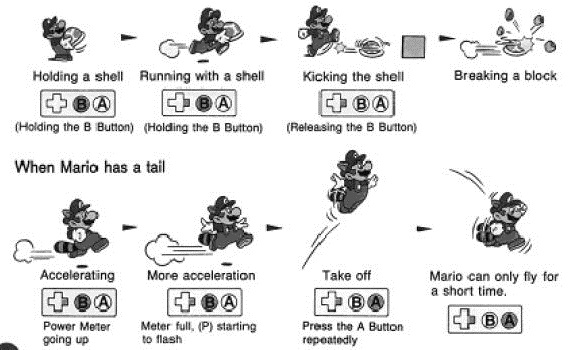GR Showdown pits the Game Revolution staff against each other in a passionate debate on a particular hot-button gaming topic. Our self-imposed rules? There is no middle ground—all must take a side. All debates will have an equal number of representative on both sides: either 1-on-1 or 2-on-2 . And all our arguments must be made in 350 words or fewer; 500 or fewer, if it's 1-on-1. Which side are YOU on?

 Alex Osborn – YES: Why should tangible paper manuals be cycled out? The answer to that question is rather simple: It's a complete waste of time, effort, and paper. In today's day and age, gamers just want to jump in and play a game; they don't want to waste their time flipping through a little booklet.
Alex Osborn – YES: Why should tangible paper manuals be cycled out? The answer to that question is rather simple: It's a complete waste of time, effort, and paper. In today's day and age, gamers just want to jump in and play a game; they don't want to waste their time flipping through a little booklet.
Game design has fundamentally changed. Developers are getting much better at integrating playable tutorials that remove the need for written explanation. If actually playing the game can properly introduce you to the mechanics, why would there be any need for a book that provides the very same information? Not only that, but virtually every question can be answered with a simple Google search should the game experience itself not suffice.
One reason that manuals were popular in the past was that they provided necessary background information on the game's characters, setting, story, etc. Back in the days of the NES, it was oftentimes difficult to discern exactly who you were playing as and/or where you were. With colorful, illustrated manuals, the developers were able to help you paint a picture in your head of what they are aiming to convey. In that way, a manual, coupled with a visually simplistic game, aided in creating an overall richer experience for the player. However, thanks to technological advances, there's need for that anymore.
There's really not much else to say. Manuals had their purpose in the past, but they simply don't offer enough value to justify producing anymore. Seriously, think of all the trees that will be saved should paper manuals be phased out entirely. Go green, guys. Go green.
Oh yeah, and aren't we headed toward a digital future? No boxed product means no manual. Let's just embrace the future instead of clinging to the relics of the past.

 Nick Tan – NO: Sure, the decline of printed manuals is inevitable, but there are still many reasons for physical manuals to exist. And this isn't just a view from rose-tinted glasses.
Nick Tan – NO: Sure, the decline of printed manuals is inevitable, but there are still many reasons for physical manuals to exist. And this isn't just a view from rose-tinted glasses.
When I'm engrossed in the game, I don't want to be given too many instructions that interrupt the experience, which is where manuals come in. Many times before I even pop the game disc into the tray, I carefully read through the manual, on the way back from the game store or while sitting on the john, so that I can absorb as much of the game's rules, characters, and world. I don't need an in-game tutorial to hold my hand if I'm well-prepared.
In short, manuals are an appetizer. And I will devour the entree when I'm ready, sir.
Any video game collector worth his or her bit-sized salt should miss manuals as a part of the overall video game experience, as they are an essential component to the packaging and many manuals are works of art themselves. When publishers dodge the absence of a game manual by saying that they're going green or printing a mere cover sheet instead of an actual manual that's more than longer than five pages, I see it as a missed opportunity to increase the value of the game and involve the player before the game begins. What they see is just an instruction booklet in the most practical, boring sense.
But the best manuals that we nostalgically remember drew players into the game, sometimes with helpful hints against bosses, random trivia, and bits of story that made us curious. Sometimes there were large maps, short chapters on the game's backstory, perhaps even swag.
I'm talking about the 100-page manual for Earthbound and the mock newspaper of The Onett Times that came with it; the manual for Pokémon Red/Blue that helped players reach the first gym leader Brock and provided a semi-filled bestiary that made players want to collect all 150 Pokémon; the manual art comics for Metal Gear Solid 2, 3, and 4 where Otacon teaches Snake the basics of the game; and the delightfully detailed instructions in the manual for Super Mario Bros. 3. These manuals let players know that the company cares about its consumers and is willing spend the money to do so.
And they were all for free. Nowadays, the consumer needs to pay $10-20 for the large, clunky strategy guide (probably due to a behind-the-door deal with the strategy guide makers) and another $10-20 for the collector's edition with those doohickeys inside. It's just another example of how the standard video game experience has been reduced to nickels and dimes. In the shadow of big business, manuals are just a part of the chopping block. What used to be a beacon of light revealing the best of developers is now a blank sign revealing the worst of them.







